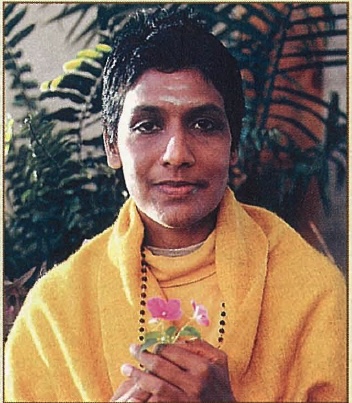BY BRAHMACHARINI MAYA TIWARI
My early life was fostered by wholesome practices that preserved the good Earth–the practices of sadhana. Before my birth, my family moved from the sacred land of India to the isolated land of Guyana. Because Guyana was about one hundred years behind the technological world, we were able to safeguard our ancestral memories through the practice of sadhana. The Sanskrit etymology of the word sadhana comes from the single root ‘sadh,’ that bears a multitude of meanings. In its original and whole sense, however, sadhana is the wholesome activities practiced in harmony with the cyclical rhythms of nature. By practicing these activities provided by the universe to sustain salubrious health, my family secured our rhythmic, harmonic sonority with the Divine. For all humans, practice of sadhana is the vital means of accessing cognitive memory–memories gathered through our past lives. Once our cognitive memories are awakened and our remembering self begins to function, we are able to achieve resplendent health.
Far away from the homeland of India, my family preserved the practice of sadhana. The land was the hearth of my people’s practice. The Vedic rituals they performed were a living recreation of the sacred, tied as they were to the bounty of the Earth and the sweat of the people. As a result, our cognate wisdom was maintained by the elders who kept these sadhanas alive.
In my youth, I listened to family elders tell stories of the Earth practices of my ancestors, the ancestors of India. The Vedic heritage of India and Nepal begins with the story of the ancient sages, called rishis, who lived in Aryavarta, the sacred land of the Himalayas. Here, sadhana as a practice first emerged. These ancient sages experienced the Divine in all activities, assimilated the vibrations of the Divine and transmuted them into their thoughts, thereby bringing forth knowledge in the form of sound. Their primal intention was to cognize the infinite consciousness by communing with nature’s cosmic rhythms, bonding with the trees, herbs, rivers, animals–all of life. Within each finite form they recognized the infinite. From there, they ascended to cognize the absolute Divine Love found equally in all things. Through their sadhana, they sustained land, water, wind and fire.
Although modern life is nearly an antithesis to the ancient land of Aryavarta, through the practice of sadhana, each of us can begin to recognize the infinite in the finite. By reordering our lives to move within the cosmic rhythms we can cognize the absolute Divine Love found equally and wholly in all things.
Twenty years ago, I redirected myself toward living a life entwined with nature. I was led back to the Himalayas. I found myself descending from a mountain to face the light shadows of an afternoon sun, stretching across the forest of winter trees adorned with ice. The iced branches accentuated nature’s dynamic structure in fluent movement. Each branch seemed to replicate the cosmic forms, musical symbols, horns of the reindeer, delicate tear drops, letters of the Sanskrit alphabet, shapes of animals, spiral of creation and the six-pointed star of the snowflake, all brought forth from the vibration within nature.
Here, in the serene Himalayan winter, I first recognized that all of nature is perpetually within sadhana. In this state of profound personal serenity I was thrust to the depths of my heart, where I discovered the true nature of sadhana. Sadhana is formed from ojas, prana and tejas. These three primordial principles coalesce into the cosmic templates of food, breath and sound. This discovery, rooted in the wisdom of the Vedas, emerged as my observance of human life within nature deepened. On top of that Himalayan mountain, my own cognition awoke to the ways of universal sadhana.
The healing forces of sadhana work through nature in many ways. The leaves and bark of the trees are continually massaged by the wind; the rocks and pebbles are rubbed by the streams and rivers; the animals are brushed by the undergrowth of the forests and the birds are caressed by the wind and skies. These natural motions are part of the universe’s immense rhythms and comprise her innate practice of sadhana. All forms of life, other than the human species, naturally remain in the bliss of their Mother’s bosom, enduring life, obeying their instincts for survival.
We are also equipped with this universal instinct, with cosmic impulses that irretrievably bond us to the creation. We need only redirect our life to move within the cosmic rhythms, instead of fighting the natural order, and our universal instinct will guide us. In the practice of sadhana, we may be able to resume our human birthright as stewards who safeguard all of life. Sadhana is more than humans’ mere duty to dharma. To quote Rabindranath Tagore, in discussion of one who practices sadhana: “The water does not merely cleanse our limbs, but it purifies our heart, for it touches our soul. The Earth does not merely hold our body, but it gladdens our mind, for its contact is more that a physical contact. It is a living presence.” And when we learn to dance within the Earth’s cosmic rhythms, we begin to heal from a core deep within us. We experience sadhana.


